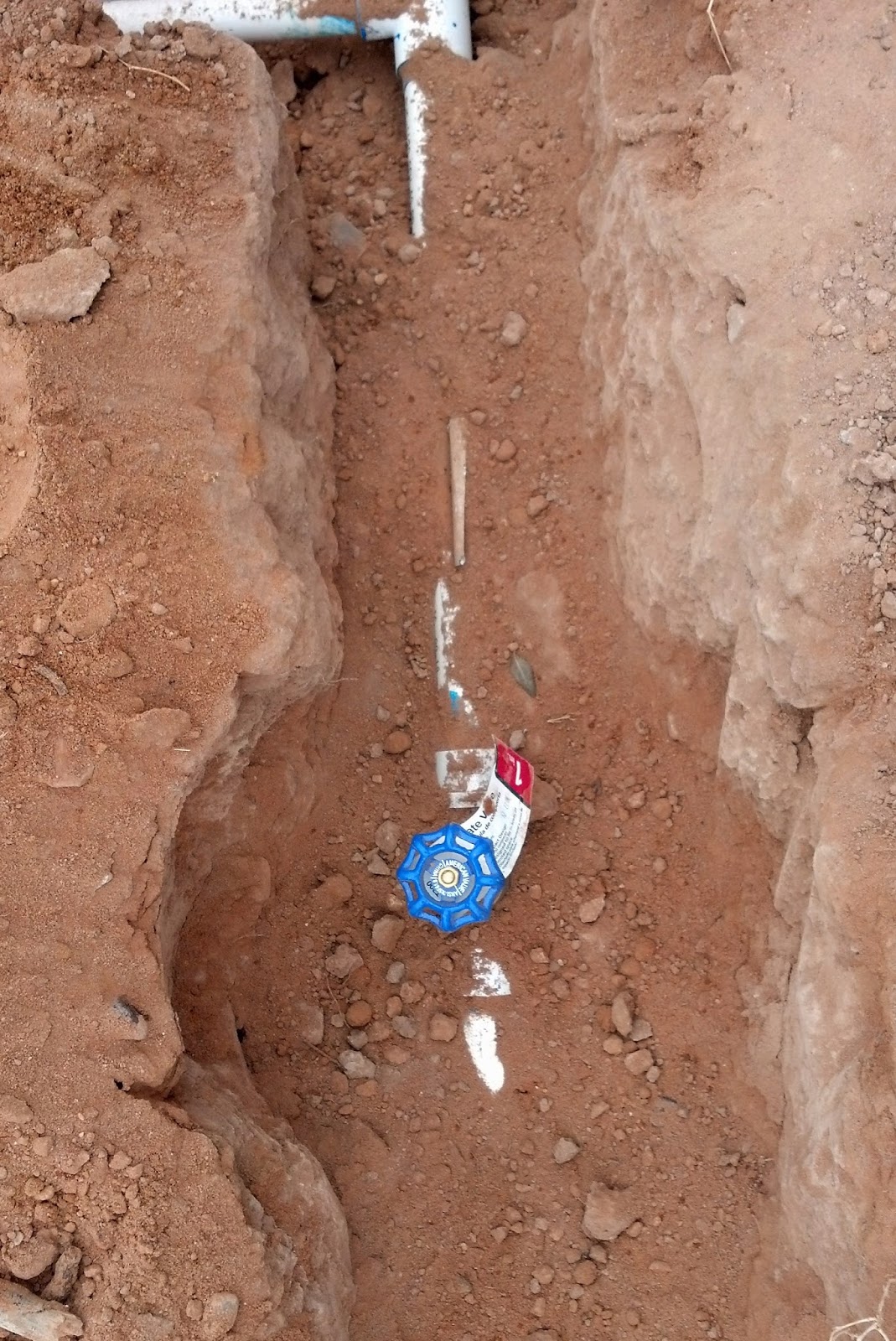Gardening in the desert presents challenges that are rarely addressed by gardening experts who honed their skills in more humid climates. Here in the Southwest, it is not uncommon to see precipitation values for the entire year that equal rainfall received in a single storm in more humid climates. When annual precipitation falls below 15 inches, soil, which can take millennia to develop, evolves a different chemistry, different structure, and different biology than that of soils conditioned by plenty of rain. High pH and salinity challenges plant growth, and is often made worse with chemical fertilizers. To garden successfully in the desert, think organically, and be willing to invest in building your soil. Expect a need to provide irrigation and organic matter.
 |
| Water lines should be buried to prevent freezing in the winter. |
There are many ways to calculate how much is needed, but most home gardeners can get by with simple rules of thumb. An oldie but goodie is to add 4 inches of decayed or composted organic matter, which you can mix it into the top foot of soil prior to your first planting. While this estimate likely falls on the low end for a desert soil like mine, the fact is, 4 inches on a garden of any size translates to a lot of compost. In upcoming articles, I will discuss composting and alternatives, including mulches, cover crops, and green manures. For now, just note that lots of organic matter is a must.
Next, look at the depth of the soil. This water line runs at about a foot deep, and you can see that everything in that top foot of soil is rather uniform. There are no big changes in visible color and texture. We can actually dig a good 2-3 feet down before we run into hard, white caliche on this particular site. This is great for a vegetable garden, where the first 12 inches will be the most important for seasonal produce crops. When soils are very shallow, gardeners should consider using a raised bed containing soil from an alternate site.
Soil texture is difficult to discern from a visual, but if you were present on the site, you would want to pick up a small handful of soil, get it real wet, squeeze the water out, and look at the shape of the soil in your hand. If your fingerprints remain indented in the soil, if it is smooth and holds together well, it contains a lot of clay. This is what you might call a heavy soil. Clay soils contain a lot of nutrients, but they are difficult to aerate, and are prone to compaction, swelling, and cracking. If the soil ball holds its shape when you open your hand, but crumbles when you touch it, this is a loamy soil, which is great for growing. If the soil crumbles apart when you open your hand, it is probably a sandy soil. A sandy soil has great drainage, but it can have a hard time storing water and nutrients.
Finally, look at the biology. What do you see living in the soil? In winter, you won’t see much, so consider what is present during the growing season. This particular view has no evidence of plant roots, earthworms, spiders, or life of any kind. Knowledge of site history, some termite trails nearby, and a dense stand of native shrubs next to this garden reassure us that life is possible here, but this sparse biology must be reversed if the garden is to provide high quality vegetables rich in nutrients. The scarcity of soil critters, which I also confirmed with microscopy, is a condition that organic matter, irrigation, and my spring plantings should quickly reverse.
So, to review, when gardening in the desert, establish a dependable water source, and examine your soil. Color, depth, texture, and visible biology are qualities that any home gardener can evaluate without extensive training or costly analytical tools. Think of biology as “life.” When no plants, even weeds, or soil creatures are evident, rely on your observations of the surrounding area, knowledge of site history, or even soil biology or soil chemsitry tests to determine your site potential, and guide your management decisions. Organic matter, the biology it supports, and water are typically the most limiting factors in desert lands. When these are properly adjusted, other amendments are rarely necessary.
